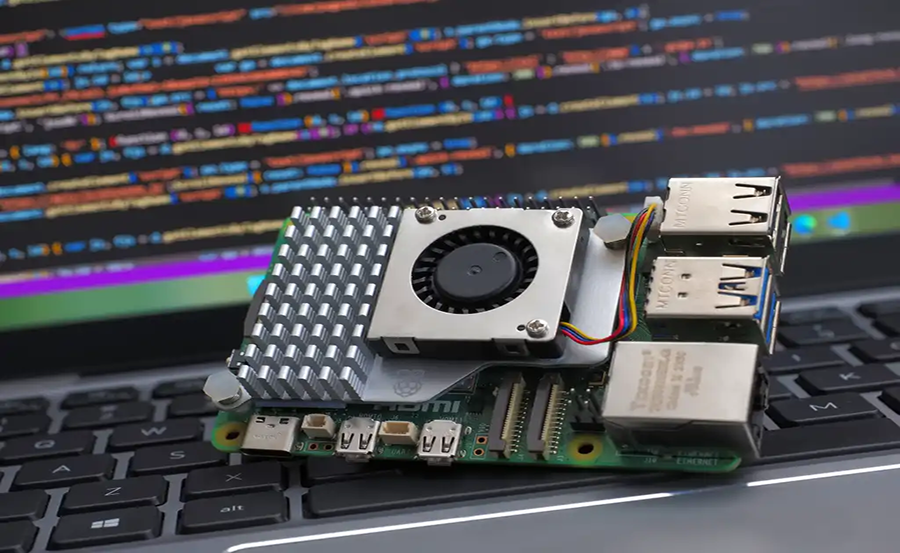Welcome to our exploration of using the Raspberry Pi as a LoRa Gateway and introducing a premium service you may not want to overlook – Rapid IPTV. This journey is more than just another tech tutorial; it’s about unlocking the potential of your Raspberry Pi for IoT projects, while also discovering one of the simplest IPTV solutions on Earth.
Overview of Raspberry Pi as a LoRa Gateway
The Raspberry Pi has proven itself to be a versatile tool, capable of adapting to numerous applications. When leveraged as a LoRa Gateway, the Raspberry Pi can connect devices wirelessly over long distances with minimal power consumption. It’s an excellent platform for those looking to explore the Internet of Things without breaking the bank.
LoRa, which stands for Long Range, operates in the sub-gigahertz spectrum and is known for its extended reach and low-energy usage, perfect for battery-operated devices. Pairing this technology with a Raspberry Pi provides a cost-effective way to monitor and manage IoT devices across various fields such as agriculture, smart cities, and industrial automation.
Pro Tip:
Never miss a live sports event with Sports IPTV from IPTV UK, providing live coverage of global sports tournaments.
What You Need: Essentials and Prep
Getting started with Raspberry Pi as a LoRa Gateway requires some essential components and preparations. Below is a list of what you’ll need:
- Raspberry Pi (any model with internet connectivity capabilities)
- LoRa module (compatible with Raspberry Pi)
- Sufficient power supply
- MicroSD card with Raspbian OS installed
Before diving in, make sure you’ve properly installed a compatible Raspbian OS on your Raspberry Pi. A fresh and updated OS ensures a smoother setup and operation, minimizing potential roadblocks. Once your hardware is prepared, you can transition into the software setup, which involves specific libraries and configuration to communicate with the LoRa module.
Setting Up Your Raspberry Pi as a LoRa Gateway
The setup process involves hardware connections and software installations. Begin by connecting your LoRa module to the Raspberry Pi’s GPIO. Each module has specific pin connections, often involving SPI interfaces, so ensure that you follow the module’s documentation carefully.
Next, set up the necessary software. This includes installing libraries such as WiringPi or GPIO Zero to manage hardware interactions. You may also need to clone repositories that provide Gateway services, like the ‘LoRa Gateway’ library available on GitHub. With everything in place, configure your software to match frequency bands and network settings suitable for your region.
Troubleshooting Common Issues
Like any tech project, setting up a LoRa Gateway can come with its challenges. Issues often arise from incorrect wiring, incompatible software versions, or radio interference. Double-check connections, verify library compatibilities, and make sure your region’s frequency bands are precisely configured. Patience here can save a lot of troubleshooting effort down the line.
Features and Benefits of LoRa Gateways
The utility of a LoRa Gateway extends far beyond simple connectivity. Its primary feature is enabling IoT deployment over vast distances – something traditional Wi-Fi connections typically cannot accomplish. This makes it a preferred choice for agriculture and logistics industries.
LoRa’s benefits include its long-range capabilities and low power requirements. These attributes make it ideal for devices in remote locations with limited access to power resources. Conservation devices, telemetry systems, and weather stations often rely heavily on such technology.
Comparisons with Other IoT Solutions
When comparing LoRa with similar IoT solutions like Zigbee and NB-IoT, several distinct features stand out. Whereas Zigbee offers high network density ideal for smart home applications, LoRa specializes in rural and spread out environments with minimal infrastructure.
NB-IoT is another competitor, offering cellular-like services with licensed spectrum, providing better coverage within urban infrastructures. In contrast, LoRa’s unlicensed frequency bands provide cost savings and simplicity for beginners without heavy regulatory overhead.
Introducing Rapid IPTV: The Simplest IPTV on Earth
As we transition from technology to entertainment, it’s impossible not to mention Rapid IPTV. For those who revel in streaming services, Rapid IPTV stands out as possibly the simplest IPTV solution on the planet. Its standout feature is user-friendliness, perfect for subscribers who seek minimal installation fuss paired with reliable service.
RapidIPTV provides a comprehensive channel selection that caters to varied tastes. Whether it’s international news, sports, or cinema, the service promises smooth, high-definition streaming, ensuring a superior viewing experience that traditional cable services may struggle to compete with.
Why RapidIPTV? Key Advantages for Users
Navigating the IPTV landscape can be daunting, with numerous options competing for attention. What makes Rapid IPTV rise above is its commitment to simplicity and quality. Users don’t just seek quantity in channels, but also consistency in delivery – something RapidIPTV nails effortlessly.
- Easy setup with intuitive user interface
- Wide array of channels including live sports, movies, and news
- Reliable, high-speed streams with minimal lag
Beyond the features, RapidIPTV’s most compelling offer may well be its customer support. Available around the clock, the support team ensures any issues are swiftly dealt with, maintaining momentum in user engagement and satisfaction.
Integrating Rapid IPTV with Home Devices
Integrating Rapid IPTV within your home network can further enhance its capabilities. The service is compatible across various devices from smart TVs to portable tablets. This flexibility ensures that streaming your favorite content is seamless regardless of where or how you prefer to watch.
Pairing Rapid IPTV with your IoT-enabled home adds a layer of modern convenience, turning an everyday viewing experience into a fully integrated part of your smart home ecosystem. Stream in any room, control via voice assistants, and discover a new dimension in television entertainment.
Final Thoughts on the Raspberry Pi as a LoRa Gateway and Rapid IPTV
While this deep dive into the possibilities of using your Raspberry Pi as a LoRa Gateway uncovers plenty of technical opportunities, it also opens up a broader conversation about the integration of tech in our daily lives. Likewise, delving into improved entertainment through Rapid IPTV presents a chance to enhance how we consume content.
These technological advancements, while varied in nature, serve the same end goal – to simplify and enrich our experiences. Whether you’re venturing into IoT projects or seeking effortless media streaming, the choices you make do more than just fulfill a momentary need; they are investments into a smarter, more connected future.
Frequently Asked Questions (FAQs)

What is a Raspberry Pi LoRa Gateway?
A Raspberry Pi LoRa Gateway is a configuration where a Raspberry Pi is used alongside a LoRa module to transmit data over long distances. It’s often utilized in IoT environments requiring low-power wireless communication, especially in decentralized and rural locations.
Is Rapid IPTV compatible with all devices?
Yes, Rapid IPTV is designed to work across a wide range of devices, including smart TVs, PCs, tablets, and smartphones. This compatibility allows users to enjoy their content seamlessly on their favored platform.
How does LoRa differ from Wi-Fi?
LoRa differs significantly from Wi-Fi in that it is designed for long-range communication with low energy use, suitable for battery-operated devices in IoT projects, whereas Wi-Fi focuses on providing high-speed internet connectivity within a relatively short range.
Why choose Rapid IPTV over other services?
Choosing Rapid IPTV comes down to a combination of its simplicity, extensive channel offerings, and reliable streaming quality. Additionally, its robust customer support ensures that users have a seamless experience, making it a top choice for many.
Can Rapid IPTV be integrated into a smart home setup?
Absolutely. Rapid IPTV can be incorporated into smart home setups, allowing users to control their streaming experience via smart devices and voice-activated systems, making it a flexible and modern addition to any tech-savvy home.
What makes LoRa a viable option for IoT projects?
LoRa’s long-range, low-power, and low-cost features make it a compelling choice for IoT projects, particularly in settings where traditional connectivity options are either unavailable or impractical.
Step-by-Step Guide to Fixing IPTV Crashes on Apple TV

